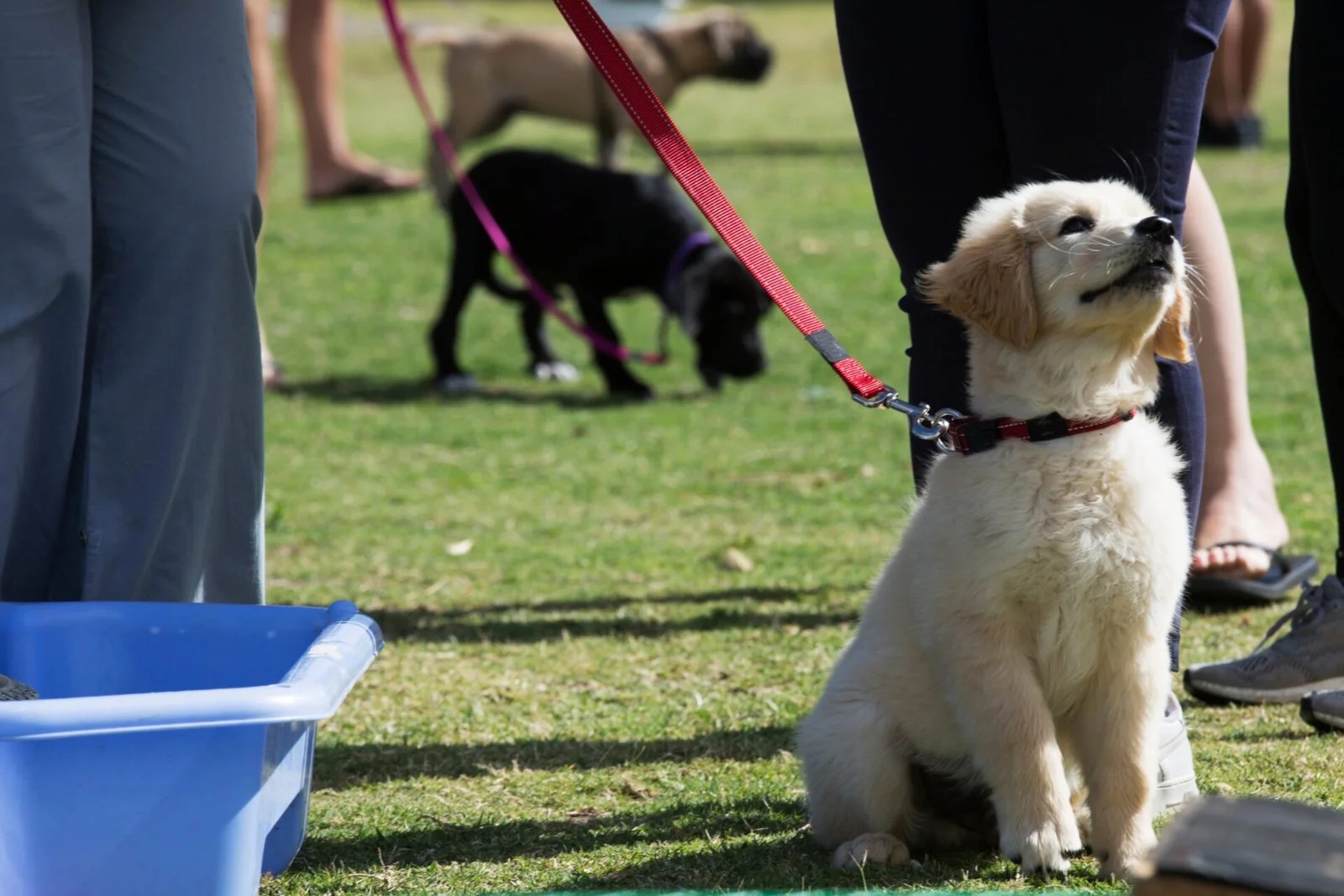
Bringing home a new puppy is exciting, but it also comes with the responsibility of teaching them how to behave. One of the biggest questions new dog owners ask is: When should a puppy start obedience training? The short answer is that training should begin as soon as your puppy comes home, usually around 8 weeks of age. At this stage, puppies are curious, eager to learn, and open to building new habits that will last a lifetime.
Why Early Training Matters
Puppies are like sponges in their first few months of life. They learn quickly and can pick up both good and bad habits with ease. Starting puppy obedience training early helps set the proper foundation. When you begin at 8 weeks, you’re not just teaching commands, you’re showing your puppy how to live safely and happily with your family.
Waiting too long can make training harder. Older puppies and adult dogs may already have developed unwanted behaviours such as pulling on the lead, ignoring recall, or jumping on people. Early obedience training prevents these issues from becoming long-term habits.
The Right Age to Start Training
Most trainers recommend starting obedience lessons as soon as your puppy is 8 weeks old. At this age, they are old enough to understand basic cues but still young enough to form strong associations with positive behaviours.
That said, training should always be age-appropriate. A very young puppy has a short attention span, so sessions should be kept short, usually around 5 to 10 minutes. As your puppy grows, you can increase the length and complexity of the training.
If you adopt an older puppy or even an adult dog, don’t worry. It’s never too late to start obedience training. The process may take a little longer, but with patience and consistency, older dogs can still learn new skills.
Core Skills to Teach First
When starting obedience training, keep things simple and focus on skills that will make everyday life easier. Some of the first commands and behaviours to teach include:
Name Recognition and Recall
Your puppy should know their name and come when called. This builds the foundation for safety and gives you control in everyday situations, especially outside.
Sit and Stay
Teaching your puppy to sit and stay helps manage their energy and teaches them patience. These commands are also helpful in daily situations, such as waiting before crossing the road.
Leash Manners
Many puppies pull on the lead because they’re excited to explore. Early training helps them learn to walk calmly beside you, making walks more enjoyable for both of you.
No Biting or Jumping
Puppies naturally nip and jump, but these behaviours can become problems if not addressed. Redirect biting with toys and reward calm greetings instead of jumping up.
The Role of Positive Reinforcement
The most effective way to train a puppy is through positive reinforcement. This means rewarding your puppy for good behaviour with treats, praise, or playtime. Rewards help your puppy make a connection between the command and the action, encouraging them to repeat it.
Avoid harsh corrections or punishment. Shouting, hitting, or scaring your puppy will only make them anxious and damage the bond you’re building. Instead, stay calm and positively redirect their behaviour.
Socialisation as Part of Training
Obedience training goes hand in hand with socialisation. From 8 to 16 weeks, puppies go through a critical learning period. During this time, they should be safely introduced to new people, environments, and other dogs.
A well-socialised puppy is less likely to develop fears or aggression later in life. Combining obedience training with socialisation creates a well-rounded dog that is confident in different situations.
How Often to Train
Consistency is key when it comes to training. Short, daily sessions are most effective for young puppies. Aim for a few 5 to 10-minute sessions spread throughout the day. Repetition helps your puppy remember commands, but keeping sessions short prevents boredom.
As your dog gets older, you can extend training time and practise commands in different environments, such as the park or on walks. This helps your puppy generalise their learning and follow commands outside the home.
When to Consider Puppy Classes
While you can do a lot of training at home, puppy obedience classes provide structured learning with professional trainers. They also give your pup valuable socialisation with other dogs in a safe environment.
Most classes accept puppies who have had their first round of vaccinations, which usually happens around 10 to 12 weeks of age. Group classes are a great way to reinforce what your puppy learns at home while helping them get used to distractions.
Common Training Mistakes to Avoid
- Starting too late: The earlier you start, the easier it is for your puppy to learn.
- Inconsistent rules: Everyone in the household should use the same commands and expectations.
- Skipping socialisation: Obedience is necessary, but confidence around people and dogs is equally vital.
- Expecting perfection: Training takes time. Be patient and celebrate small wins.
Conclusion
The best time to start obedience training is as soon as your puppy comes home, usually at around 8 weeks of age. Short, positive, and consistent sessions will help your puppy build the foundation for good behaviour and a happy life.
Train Walk Poop cares about helping puppies and their owners succeed. For more tips or to get professional support with obedience training, contact us at 801-613-1364. We’re here to make training easier for you and fun for your puppy.
https://trainwalkpoop.com/when-should-a-puppy-start-obedience-training/
